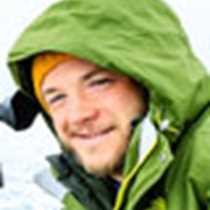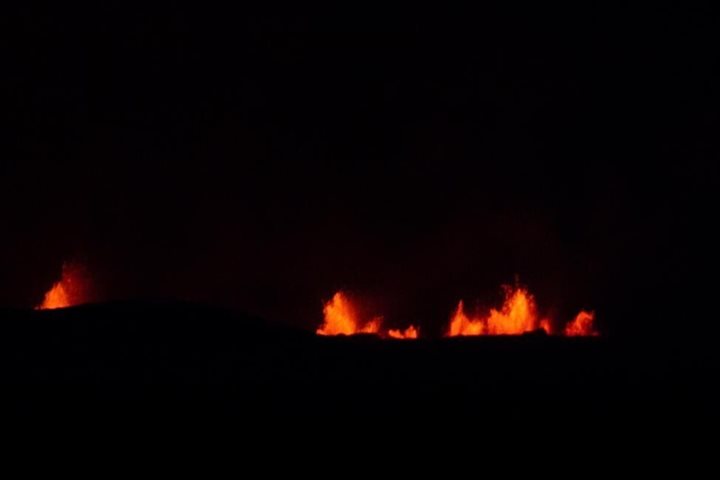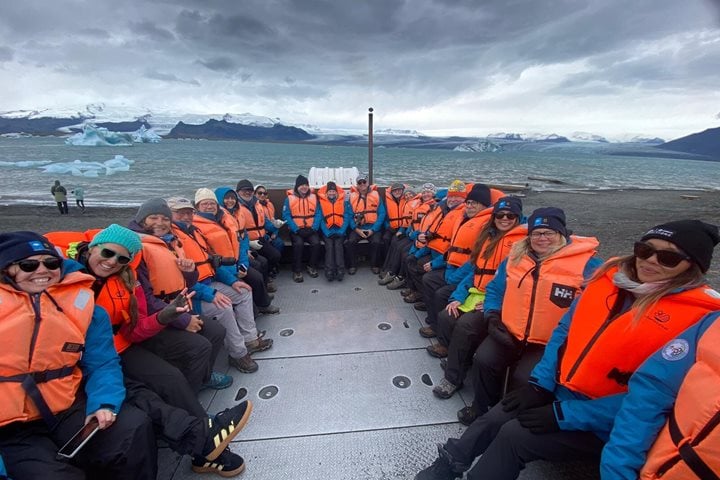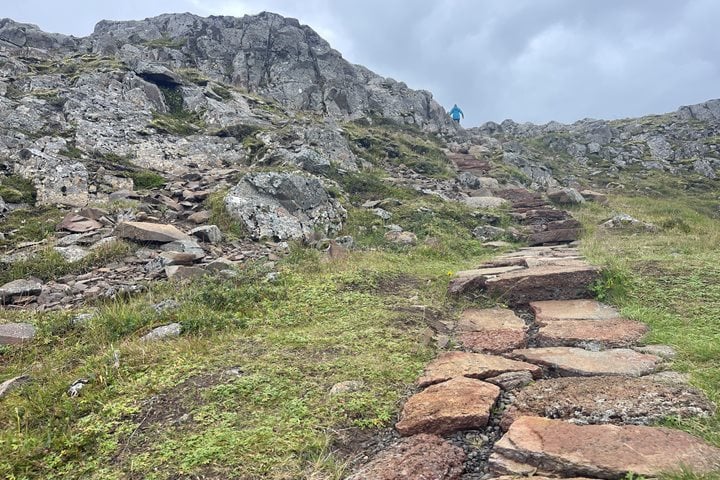The guests aboard National Geographic Orion spent the day in one of the most amazing geologic places on earth. We went by coach to the Lake Myvatn area to see the numerous volcanic features that were formed along the rift valley. This area is the only place on earth where the oceanic ridge is above sea level for all to see.
On the way there, we stopped to see Godafoss waterfall. We walked along the milky white glacial river to the large horseshoe-shaped waterfall that was cascading over the basalt lava rock. Downstream from the falls we observed the columnar jointing in the basalt rocks, which is a honeycomb pattern caused by cooling and shrinking of basalt lava as it cools.
The guests walked around the Namaskard Hydrothermal Field, where we saw various hot springs and fumaroles. Steam was coming out of the fumaroles and depositing yellow sulfur crystals. The most fascinating feature was the boiling mud pots that were formed by hot, acidic water. We learned about the causes of the various colors of hydrothermal alteration, such as red from rusting iron minerals, yellow from sulfur deposition by gases, and white from silica deposited by hot water.
Dimmuborgir lava field was a crazy landscape of black basalt columns and caves. This unique feature was created when a lava lake was formed, pillars of basalt cooled and hardened, and then finally the lava lake drained away. We enjoyed walking around and making out the shapes of trolls and castles amongst the basalt pillars and lava caves. We stopped to see the beautiful Grjotagja caves along the fracture zone on the west side of the rift valley. There were warm springs in the caves, which created unusual photos. On top of the caves, we posed for photos above and along the fissures in the basalt.
We also visited Hverfell Volcano, which was a 500-foot high tephra ring. This cinder cone-like feature was formed by violent steam explosions when rising magma encountered water. Many of the guests walked up to the top for a spectacular overview of the Lake Myvatn area and the rift valley. After we left the Myvatin area, the coaches took us to Husavik, which is an attractive fishing village with a great whale museum.
One of the stops was Skutustadagigar, which is a field of dozens of grass-covered “pseudo-craters” that we walked around. These rare features were formed 2000 years ago when lava flowed into a lake and cooked the lake sediments, which in turn exploded in steam explosions through the lava flow.
After dinner, we landed on Grimsey Island off the northern coast of Iceland that is the northernmost point of Iceland. We walked across the island to the Arctic Circle monument, which was a fun marker covered with various signs to places around the world. Most of us walked over to the cliffs to watch dozens of puffins sitting on top of the cliffs in the beautiful “golden hour” lighting. On the way back to the ship, we saw the sun setting in the north! What a perfect ending to a wonderful day.









